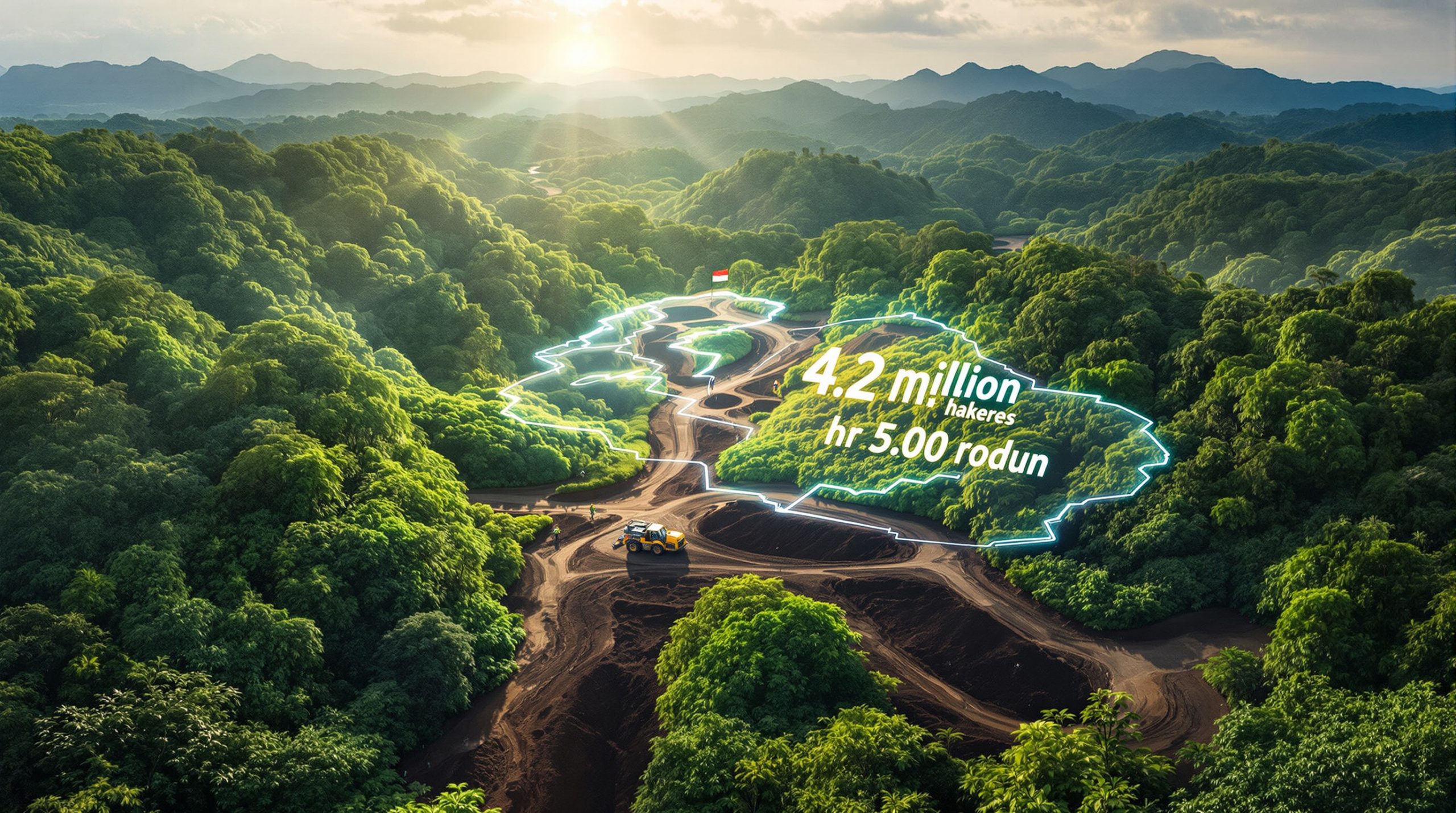Understanding South Africa's Mineral Resources Development Bill (MRDB)
The Mineral Resources Development Bill (MRDB) of 2025 represents a significant legislative milestone for South Africa's mining sector. This comprehensive framework aims to modernize the country's approach to mineral resource management while balancing economic growth, environmental protection, and social development. As a successor to the Mineral and Petroleum Resources Development Act of 2002, the MRDB introduces more robust provisions to address contemporary challenges and opportunities in the mining industry.
According to Mining Review Africa, the recent implementation of the MRDB marks "a positive development" for South Africa's mining sector, particularly in its approach to prioritizing minerals with the highest potential to drive economic and industrial growth. The bill creates a foundation for sustainable mining practices while providing mechanisms to maximize the value of the country's abundant mineral resources.
Key Objectives of the MRDB
The bill encompasses several core objectives designed to transform South Africa's mining sector:
- Establishing regulatory frameworks for sustainable mining practices
- Prioritizing minerals with high economic potential
- Creating financial mechanisms for environmental rehabilitation
- Providing incentives for mining industry innovation
- Formalizing artisanal and small-scale mining operations
- Enhancing community consultation processes
These objectives reflect a holistic approach to mining regulation that acknowledges both the economic importance of the sector and its environmental and social impacts. By addressing these multiple dimensions simultaneously, the MRDB aims to create a more balanced and sustainable mining industry in South Africa.
How Does the MRDB Prioritize High-Potential Minerals?
One of the most significant innovations in the MRDB is its strategic classification system for minerals based on their economic and industrial value. This approach represents a departure from treating all minerals equally to focusing resources on those with the greatest potential impact.
Mining Review Africa notes that Africa holds a significant amount of global rare earth resources, with South Africa possessing substantial deposits. The prioritization framework established by the MRDB allows the country to strategically develop these resources based on their economic potential and critical minerals energy transition importance to industrial development.
Strategic Mineral Classification System
The MRDB establishes a hierarchical classification system for different types of minerals:
- Critical minerals: Resources essential for technological advancement and energy transition, including rare earth elements and battery metals
- Industrial minerals: Materials needed for manufacturing and infrastructure development
- Rare earth elements: Specialized minerals with applications in high-tech industries and renewable energy
- Traditional minerals: Established resources that continue to support economic activity, such as gold, platinum, and coal
This classification system helps guide regulatory priorities, investment incentives, and permitting processes to ensure that minerals with the highest value potential receive appropriate attention and support.
Benefits of Mineral Prioritization
Strategic mineral prioritization creates several advantages for the mining sector and broader economy:
- More efficient allocation of regulatory resources
- Targeted investment incentives for priority sectors
- Streamlined permitting processes for critical minerals
- Enhanced support for value-added processing activities
By focusing on high-potential minerals, South Africa can maximize the economic impact of its natural resources while still maintaining appropriate oversight of all mining activities.
What Environmental Protections Does the MRDB Establish?
The MRDB places significant emphasis on environmental stewardship, introducing several mechanisms to ensure mining activities minimize ecological impact and promote rehabilitation. According to Mining Review Africa, the bill provides "regulatory frameworks for environmental management" and "financial mechanisms for rehabilitation" that represent a substantial advancement in environmental protection standards.
Environmental Management Frameworks
The bill establishes comprehensive environmental management requirements:
- Detailed environmental impact assessment requirements before mining begins
- Mandatory rehabilitation planning integrated into initial project proposals
- Regular environmental compliance auditing throughout the mining lifecycle
- Integration with broader national environmental policies and standards
These frameworks ensure that environmental considerations are incorporated from the earliest stages of mining projects and maintained throughout their operation.
Financial Mechanisms for Rehabilitation
To address the challenge of abandoned or inadequately rehabilitated mines, the MRDB creates robust financial provisions:
- Required financial provisions for mine closure and rehabilitation
- Creation of environmental trust funds to secure long-term rehabilitation resources
- Performance guarantees for rehabilitation commitments
- Significant penalties for non-compliance with environmental standards
These mechanisms ensure that funds are available for proper mine closure and mine reclamation innovation even if a mining company faces financial difficulties or ownership changes.
How Does the MRDB Support Sustainable Mining Practices?
The legislation promotes innovative approaches to resource extraction that minimize environmental impact while maximizing economic benefits. Mining Review Africa highlights that "sustainable mining practices reduce environmental contamination, rehabilitate damaged landscapes and can provide more stable long-term economic benefits compared to conventional mining operations."
Sustainable Mining Incentives
The MRDB establishes multiple incentives to encourage sustainable mining practices:
- Tax benefits for companies implementing best environmental practices
- Grants for research into environmentally friendly extraction methods
- Recognition programs for sustainable mining leaders
- Streamlined permitting for projects demonstrating exceptional sustainability
These incentives are designed to offset the potentially higher initial costs of sustainable mining technologies while recognizing their long-term economic and environmental advantages.
Case Study: Rare Earth Extraction from Waste Materials
A notable sustainable mining approach highlighted by Mining Review Africa is South Africa's pioneering work in extracting rare earth elements from waste materials rather than traditional mining. This approach focuses on processing material from "stacks that were previously considered worthless and environmentally harmful waste products."
| Traditional Mining | Waste Material Recovery |
|---|---|
| Extensive excavation | Minimal new land disturbance |
| High water usage | Reduced water requirements |
| Significant energy consumption | Lower energy intensity |
| New environmental impacts | Remediation of existing waste |
| Higher capital costs | Often lower operational expenses |
According to Mining Review Africa, while some sustainable mining technologies "may have higher capital costs initially, operational expenses are often lower due to reduced waste management requirements and environmental compliance costs." Additionally, "increasingly environmentally conscious markets are prepared to pay premium prices for responsibly sourced materials," creating economic incentives for sustainable practices.
What Economic Opportunities Does the MRDB Create?
The bill aims to stimulate economic growth through strategic development of the mining sector, with particular focus on rare earth elements and other critical minerals that support technological advancement.
Rare Earth Element Potential
South Africa's rare earth resources present significant economic opportunities:
- Mining Review Africa confirms that "South Africa possesses significant rare earth deposits"
- Growing global demand for these materials in technology and renewable energy sectors
- Applications in electric vehicles, wind turbines, electronics, and defense technologies
- Opportunity to develop specialized expertise and technology in extraction and processing
The MRDB's focus on sustainable extraction of rare earth elements from waste materials "further expands its effective resource base beyond traditional ore deposits," according to Mining Review Africa, creating additional economic opportunities beyond conventional mining.
Value Addition and Beneficiation
The MRDB creates a framework for increasing the value derived from South Africa's mineral resources:
- Incentives for local processing of minerals before export
- Support for downstream manufacturing using locally produced minerals
- Development of specialized technical skills in mineral processing
- Creation of higher-value export products instead of raw materials
These provisions aim to address a historical challenge in South Africa's mining sector: the export of raw materials without capturing the additional value that comes from processing and manufacturing. The bill establishes important mineral beneficiation opportunities that could transform the country's economic landscape.
How Will the MRDB Impact Mining Investment?
The legislation seeks to balance regulatory oversight with the need to attract and retain investment in the mining sector. A related Mining Review Africa article notes that the "Minerals Council says mining bill must attract more investment," highlighting the importance of this balance.
Investment Considerations
The MRDB includes several provisions designed to create a favorable investment environment:
- Enhanced security of tenure for mining rights holders
- Streamlined prospecting and exploration applications
- Clearer regulatory frameworks with reduced uncertainty
- Reduced overlapping authority between government agencies
- Improved governance structures and transparency
These provisions aim to address concerns that regulatory complexity and uncertainty have deterred mining investment strategies in South Africa's mining sector in recent years.
Industry Response
The response from industry stakeholders has been mixed:
- Mining industry representatives have expressed cautious optimism about the bill's potential
- Concerns remain about implementation details and regulatory burden
- Calls for balanced approach to regulation and investment promotion
- Recognition of need for environmental and social responsibility in mining
The effectiveness of the MRDB in attracting investment will depend significantly on how its provisions are implemented and enforced in practice. According to the Minerals Council South Africa, the bill represents a significant step toward creating a more investment-friendly mining environment.
What Changes Does the MRDB Make to Mining Rights and Ownership?
The bill introduces several important modifications to how mining rights are allocated, transferred, and maintained, aiming to create a more inclusive and responsible mining sector.
Key Changes to Mining Rights
The MRDB establishes new frameworks for mining rights:
- New provisions for artisanal and small-scale mining permits, bringing these operations into the formal economy
- Regulation of historic mine dumps and residue stockpiles, recognizing their potential value
- Modified requirements for ownership transfers to ensure compliance with policy objectives
- Enhanced community consultation requirements for new and existing mining rights
- Clearer definition of interested and affected parties who must be consulted
These changes aim to create a more inclusive mining sector while ensuring that all mining activities, regardless of scale, adhere to appropriate standards.
Ownership Transfer Regulations
The bill includes specific provisions regarding ownership changes:
- New rules particularly affecting unlisted mining companies
- Requirements for regulatory approval of significant ownership changes
- Provisions to ensure continued compliance with empowerment objectives
- Mechanisms to prevent circumvention of social and environmental obligations
These provisions aim to ensure that changes in mine ownership do not undermine the social, environmental, and economic objectives of the mining policy framework.
How Does the MRDB Address Community Engagement?
The legislation strengthens requirements for meaningful community engagement in mining that affect local populations, recognizing that community support is essential for sustainable mining operations.
Enhanced Community Consultation
The MRDB establishes more rigorous community consultation requirements:
- Broader definition of stakeholders who must be consulted before mining begins
- More thorough consultation requirements during the application process
- Ongoing engagement throughout the project lifecycle
- Mechanisms for addressing community concerns and grievances
- Requirements for transparent information sharing with affected communities
These provisions aim to reduce conflicts between mining companies and local communities by ensuring that community perspectives are incorporated into mining decisions from the outset.
Social Development Requirements
The bill includes provisions to ensure that mining benefits local communities:
- Mandatory social and labor plans with specific development commitments
- Community development agreements with measurable outcomes
- Local employment and procurement targets
- Skills development and training provisions
- Support for community-based enterprises related to mining
These requirements aim to ensure that mining activities contribute to local economic development and social wellbeing rather than merely extracting resources without local benefits.
What Are the Implementation Challenges for the MRDB?
While the bill establishes important principles and frameworks, successful implementation will require addressing several practical challenges related to capacity, coordination, and enforcement.
Implementation Considerations
The effective implementation of the MRDB faces several challenges:
- Development of detailed regulations and guidelines to operationalize the bill's provisions
- Building administrative capacity for enforcement across multiple government agencies
- Balancing competing stakeholder interests during implementation
- Managing transition from previous regulatory regime to new requirements
- Ensuring consistent application across regions and mineral types
Mining Review Africa suggests that "if implemented properly," the MRDB can lead to significant benefits for South Africa's mining sector, particularly in sustainable rare earth mining. This highlights the critical importance of effective implementation.
Timeline for Implementation
The implementation of the MRDB is expected to follow a phased approach:
- Phased introduction of new requirements to allow industry adaptation
- Priority implementation for critical provisions addressing urgent needs
- Transitional arrangements for existing operations to achieve compliance
- Regular review and adjustment mechanisms to address implementation challenges
This phased approach aims to minimize disruption while ensuring that the bill's objectives are achieved within a reasonable timeframe. As outlined in the Mineral Resources Sustainable Development Amendment Bill, similar legislation in other countries has benefited from carefully staged implementation.
What Future Developments May Result from the MRDB?
The MRDB is likely to shape the evolution of South Africa's mining industry in several important ways, particularly regarding technological innovation and industry structure.
Anticipated Industry Trends
According to Mining Review Africa, proper implementation of the MRDB is expected to lead to several industry developments:
- "Expansion of waste recovery and technology refinement" as new approaches to sustainable mining become established
- "Continued improvement of extraction and processing technologies aimed at increasing efficiency and reducing costs"
- "Industry consolidation as sustainable practices become standardised" and companies adapt to new regulatory requirements
- Development of specialized expertise in critical mineral extraction, particularly rare earth elements
- Growth in local mineral processing capacity to capture more value from raw materials
These trends suggest a mining industry that increasingly focuses on efficiency, sustainability, and value addition rather than merely extraction.
Long-Term Economic Impacts
The long-term economic impacts of the MRDB could be substantial:
- More stable and sustainable mining sector with reduced boom-and-bust cycles
- Reduced environmental liabilities for the state and taxpayers
- Enhanced international competitiveness through sustainable practices
- Development of specialized technical expertise that can be exported globally
- Broader distribution of mining benefits across society
These potential impacts highlight the importance of the MRDB as a framework for transforming South Africa's mining sector into a more sustainable and valuable component of the national economy.
FAQs About the Mineral Resources Development Bill
How does the MRDB differ from previous mining legislation?
The MRDB builds upon the Mineral and Petroleum Resources Development Act of 2002, introducing more comprehensive environmental provisions, clearer regulatory frameworks, and specific mechanisms to promote sustainable mining practices and local beneficiation. It places greater emphasis on mineral prioritization and sustainable development than previous legislation.
Will the MRDB increase costs for mining companies?
While some provisions may increase initial compliance costs, the bill also introduces incentives and streamlined processes that may reduce long-term expenses. Mining Review Africa notes that "while some sustainable mining technologies may have higher capital costs initially, operational expenses are often lower due to reduced waste management requirements and environmental compliance costs." Additionally, environmentally conscious markets increasingly pay premium prices for responsibly sourced materials.
How does the MRDB address historical environmental damage?
The bill includes provisions for addressing legacy environmental issues, particularly through the regulation of historic mine dumps and residue stockpiles, which must be formally regularized within specific timeframes. It also creates mechanisms for rehabilitation of previously damaged areas, potentially through innovative approaches like extracting valuable minerals from waste materials.
Does the MRDB affect international mining companies differently than local ones?
The bill applies uniformly to all mining operations in South Africa, regardless of ownership. However, some provisions regarding local beneficiation and community development may have different implications depending on a company's global structure and operations. International companies may need to adapt their standard operating procedures to meet the specific requirements of the South African regulatory framework.
How will the MRDB impact artisanal and small-scale miners?
The bill formally recognizes and provides regulatory frameworks for artisanal and small-scale mining, potentially bringing these operations into the formal economy while ensuring they meet basic environmental and safety standards. This represents a significant shift from previous approaches that often marginalized small-scale miners or treated their activities as illegal.
Further Resources
Readers interested in learning more about mining developments in South Africa can also explore related educational content from Mining Review Africa, which offers regular updates on mining legislation and industry trends in the region. The publication's coverage of sustainable mining practices and rare earth element extraction provides valuable context for understanding the potential impacts of the MRDB.
Disclaimer: This article provides general information about the Mineral Resources Development Bill of 2025. The implementation details and specific provisions may change as regulations are developed. Mining companies and investors should consult with legal experts and industry consultants for advice on compliance with current mining legislation.
Want to Discover the Next Major Mining Opportunity?
Discover Alert's proprietary Discovery IQ model delivers real-time notifications on significant ASX mineral discoveries, turning complex data into actionable insights for both short-term traders and long-term investors. Visit our discoveries page to understand why historic mineral discoveries can generate substantial returns, and begin your 30-day free trial today.




